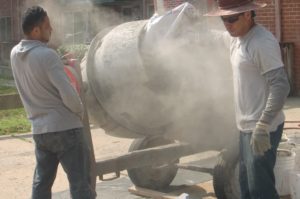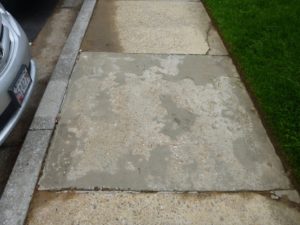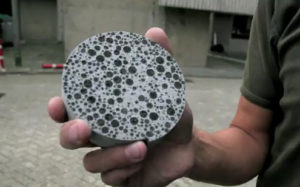New OSHA Requirements Regarding Silica Dust

 Dust clouds created while mixing concrete, jackhammering or cutting concrete sidewalks, tuckpointing, and sawing masonry blocks will soon be a thing of the past. The Occupational Safety and Health Administration (OSHA) will begin enforcing new regulations concerning worker’s exposure to silica dust on September 23, 2017. Silica dust is commonly produced when working with concrete, brick mortar, tiles, cement board, and many other common building materials. Long term exposure to silica dust can lead to the development of lung cancer, silicosis, and other permanent conditions with long lasting consequences. Because silica dust is so prevalent, the new regulations will impact many different industries including many facets of construction. Complying with these regulations will potentially impact, property owners, engineers, contractors, and other individuals, in many ways including the cost of construction work.
Dust clouds created while mixing concrete, jackhammering or cutting concrete sidewalks, tuckpointing, and sawing masonry blocks will soon be a thing of the past. The Occupational Safety and Health Administration (OSHA) will begin enforcing new regulations concerning worker’s exposure to silica dust on September 23, 2017. Silica dust is commonly produced when working with concrete, brick mortar, tiles, cement board, and many other common building materials. Long term exposure to silica dust can lead to the development of lung cancer, silicosis, and other permanent conditions with long lasting consequences. Because silica dust is so prevalent, the new regulations will impact many different industries including many facets of construction. Complying with these regulations will potentially impact, property owners, engineers, contractors, and other individuals, in many ways including the cost of construction work.
While there are many requirements detailed in the regulations, contractors will have to offer medical examinations to high exposure workers, implement engineering controls for silica dust, and develop procedures to limit the exposure to silica dust that workers experience. Depending on the circumstances and activity, engineering controls can include a vacuum system with a 99% efficiency for certain cases or water methods of controlling dust. Additionally, a HEPA vacuum may be required in certain cases and a personal respiratory protection device must be supplied to workers.
Building owners, project managers, and other individuals involved with construction need to be aware of the impacts that these new requirements can have on projects. Additionally, contractors may require cooperation from building owners and managers to be able to adhere to the new requirements.
More information regarding the requirements can be found at: https://www.osha.gov/silica/

 Wood construction is no longer constrained to low rise buildings and single-family homes. New uses are emerging resulting from an expanded interest in wood with new trends impacting construction. Tall wood construction has resulted in multiple high-rise wood buildings around the world from the
Wood construction is no longer constrained to low rise buildings and single-family homes. New uses are emerging resulting from an expanded interest in wood with new trends impacting construction. Tall wood construction has resulted in multiple high-rise wood buildings around the world from the 



 Is your concrete peeling or flaking in localized areas? Are you noticing rough, aggregate surfaces in your concrete that haven’t been there before, particularly after the latest round of winter weather? If so, your concrete may be experiencing a condition called scaling.
Is your concrete peeling or flaking in localized areas? Are you noticing rough, aggregate surfaces in your concrete that haven’t been there before, particularly after the latest round of winter weather? If so, your concrete may be experiencing a condition called scaling. Have you noticed dry, powdery deposits on the concrete elements in your community? Or have you walked across concrete and had a white, dust-like powder follow you? If so, your concrete may be experiencing a condition called dusting.
Have you noticed dry, powdery deposits on the concrete elements in your community? Or have you walked across concrete and had a white, dust-like powder follow you? If so, your concrete may be experiencing a condition called dusting. A common deterrent to personal enjoyment in multi-family buildings is sound transmission.
A common deterrent to personal enjoyment in multi-family buildings is sound transmission.
 Installing linoleum or similar covering directly on concrete floors can be problematic if there is moisture in the slab. This is especially a concern with on grade slabs where there may be moisture under the slab that can permeate upward. Linoleum and similar floor coverings act as a barrier that can cause moisture to be trapped under the flooring. When this happens, the floor covering can unbond, warp and become a serious hazard.
Installing linoleum or similar covering directly on concrete floors can be problematic if there is moisture in the slab. This is especially a concern with on grade slabs where there may be moisture under the slab that can permeate upward. Linoleum and similar floor coverings act as a barrier that can cause moisture to be trapped under the flooring. When this happens, the floor covering can unbond, warp and become a serious hazard. Researchers at the University of Maryland have found a way to make wood transparent, which could change the way that we utilize this building material.
Researchers at the University of Maryland have found a way to make wood transparent, which could change the way that we utilize this building material. We recently ran into an unusual item at a property – two hour, fire rated windows. The assemblies looked like “regular” windows but after some digging through the building drawings, it was determined that the windows were fire rated. The building code requires that exterior building walls within ten feet of a property line must be constructed using recognized fire rated assemblies. This includes the glazing.
We recently ran into an unusual item at a property – two hour, fire rated windows. The assemblies looked like “regular” windows but after some digging through the building drawings, it was determined that the windows were fire rated. The building code requires that exterior building walls within ten feet of a property line must be constructed using recognized fire rated assemblies. This includes the glazing.